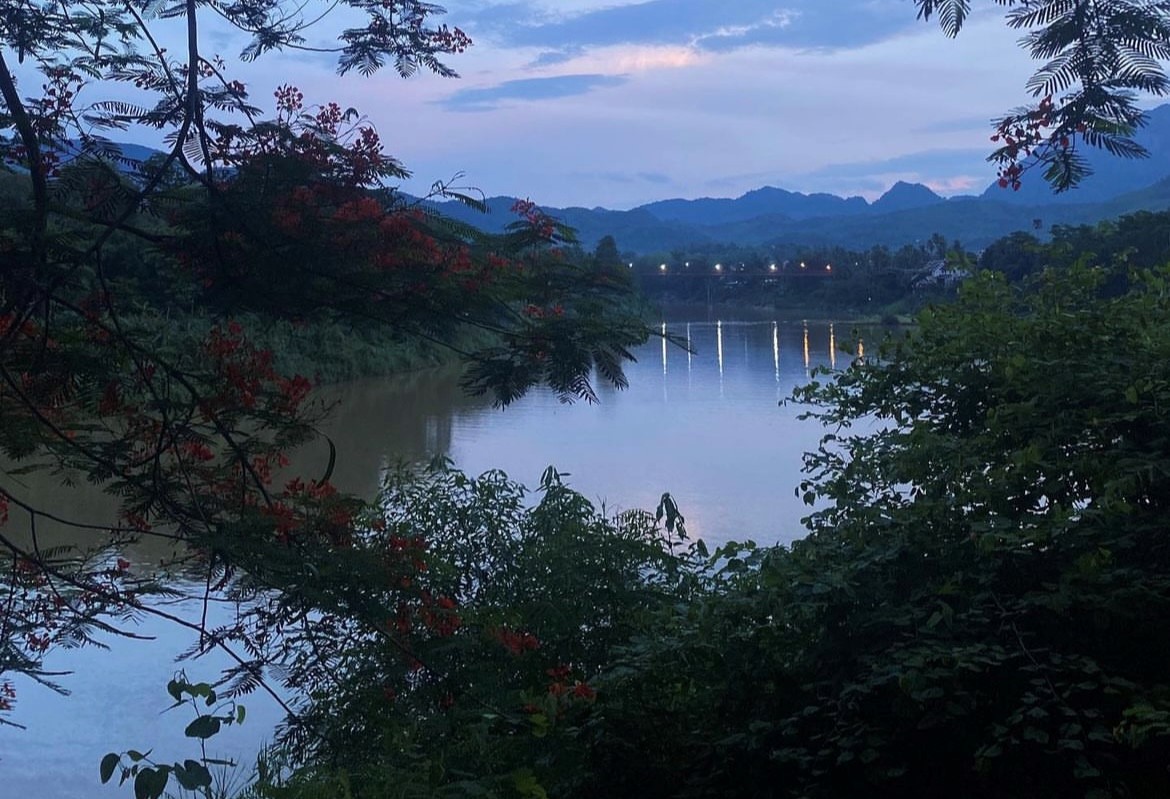One of my good friends from college is traveling around Southeast Asia and she's currently in Laos, a country I'd never heard of before (which is embarrassing considering I now have a college degree, but that's a discussion for another time). Anyways, I decided to give Laos a google (like I did the word “incandescent” a few weeks back), and it turns out Laos is the most bombed country in the world per capita. Obviously, that's a super fucked and sad fact, but it's also a confusing one. How haven't I heard of this “so-called” Laos despite it being bombed by the United States more than 270 million times? Surely that would've come up in my high school world history class, right? It just didn't make sense, so I slid on my glasses, cracked open my laptop that's on its literal ninth life, and did some research. It didn't take long for me to realize there's a reason, beyond my own stupidity, why I'd never heard of Laos: it was part of a secret war.

The landscape of Laos captured by none other than my adventurous friend Ms. Jenna Mennes
Setting The Scene Of The Secret War
Before there were armies and bombs and death, the Secret War started out like any other war — with a backstory, one that could only be crafted in hindsight. And this backstory started with a man named George Kennan. Kennan, a foreign-stationed American diplomat, sent a letter (now known as the Long Telegram) to the US State Department, sounding the alarm on the growth of communism in the East. And unlike what I've written, what he wrote was read and it caught the attention of the most powerful person in the world at the time — President Truman. Truman heeded the warning in Kennan's letter and issued the Truman Doctrine which stated the US would use its economic and military power to prevent the spread of communism around the globe. This anti-communist sentiment, first proposed by Kennan, then proclaimed by Truman, became the catalyst for America's involvement in Southeast Asia, and eventually, Laos.
In 1954, Vietnam defeated France in the First Indochina War, enabling their country to split into a communist North region, backed by China and the USSR, and a democratic South region supported by the United States. As tensions rose between North and South Vietnam in the years that followed, its neighbor country, Laos, experienced political turmoil of its own. A communist faction called the Pathet Lao began to emerge in the Northern part of the country. In fear Laos, too, would fall victim to communism, the Johnson & Nixon administrations quietly approved the CIA to build a US-weapon-supplied Laotian army capable of fighting against the Pathet Lao. The US hoped by backing the non-communists in the country, the Lao would fight their own civil war without substantial American intervention and uphold its promise of keeping communism at bay. But when North Vietnam attacked US military ships in the Gulf of Tonkin, effectively starting the Vietnam War, America's support of the free people of Laos leaned into the realm of self-serving.
Laos & The Secret War
First, the CIA bulked up the Laotian army to not only combat the Pathet Lao, but also the North Vietnamese, who were now of American interest. Then, the US military conducted bombing campaigns across the country after cloud-seeding attempts failed to destroy communist supply lines along the Ho Chi Minh Trail. Laos became nothing more than a pawn in America's war against Vietnam, a pawn played in secret and at the expense of Laotian lives. The Johnson & Nixon admistrations never fully informed Congress of the US' involvement in Laos until 1971 when congressional hearings made such information avaiable to the public, and by 1975, approximately 200,000 Lao died compared to just 728 Americans. To this day, many people are unaware of the role America played in Laos' Secret War.
The Landmine Of The World
But the story of the Secret War doesn't end there, in fact, it's still being written. Of the 2-tons-worth of bombs dropped on Laos, 30% failed to explode on impact. As a result, more than 20,000 people have been killed or injured by the unexploded ordnance (UXO) left behind. Though the United States has pledged $190 million towards UXO removal efforts in Laos and organizations such as UXO Laos and the Mines Advisory Group (MAG) have worked to clear UXO in the country, only 1% of the estimated 80 million unexploded bombs have been neutralized, making Laos the landmine of the world.
The Story Of The Secret War Continues
For the Lao, this isn't some video game where they have to sidestep bombs to beat the level or a reenactment of that one scene in the first Hunger Games movie, it's real, everyday life, and it's a life they've unimaginably grown accustomed to. It's common for a farmer to find a “bombie” on their land as they prepare for the next harvest season. It's typical for people to witness a controlled explosion on a random Tuesday. And it's normal for an eight-year-old girl to know what a Mortar, BLU-32 grenade looks like. It shouldn't be. So, on behalf of that farmer, and that man that goes to the Market on Tuesdays, and that eight-year-old girl who shouldn't have her innocence taken by a war that happened before she was born, let's write a happy ending to the story of the Secret War by spilling the secret.
Sending love to Laos,
The Monochrome Man